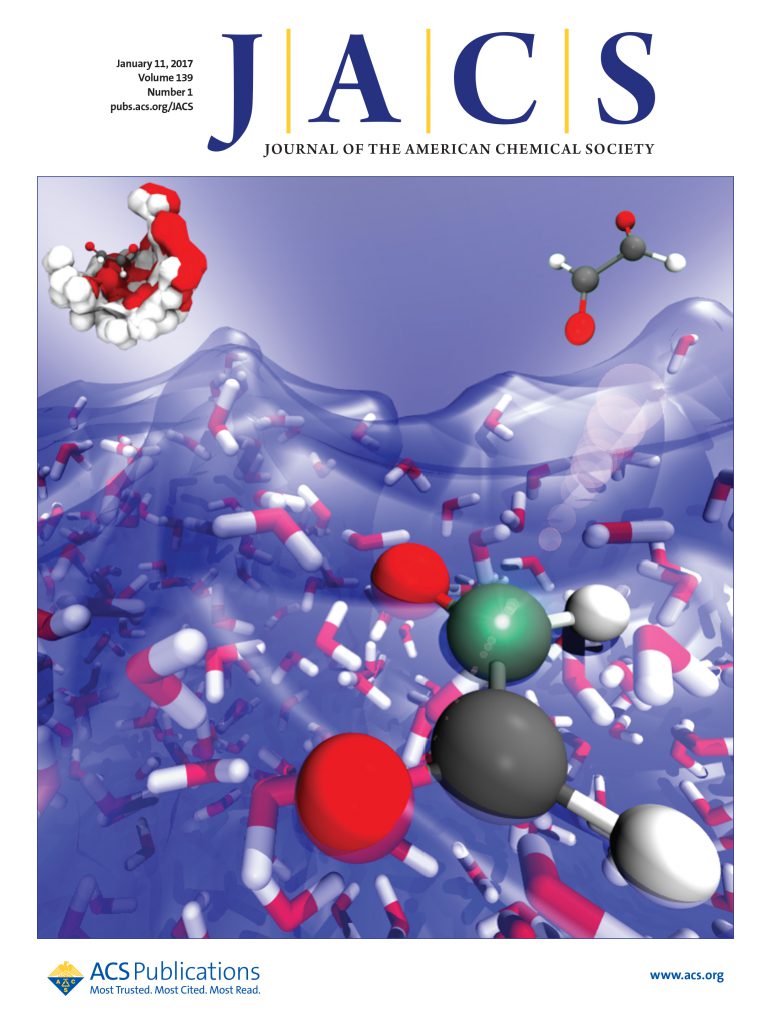Highly Active and Air-Stable Iron Phosphide Catalyst for Reductive Amination of Carbonyl Compounds Enabled by Metal–Support Synergy
IF 14.4
1区 化学
Q1 CHEMISTRY, MULTIDISCIPLINARY
引用次数: 0
Abstract
Iron has long been recognized as an ideal catalytic material for sustainable chemistry. However, conventional iron catalysts employed in liquid-phase hydrogenation reactions suffer from poor activity and air instability, severely restricting their wide applicability in practical use. Herein, we present the development of highly active and air-stable iron phosphide nanocrystal immobilized on zirconia (Fe2P NC/ZrO2) for the reductive amination of aldehydes and ketones. The Fe2P NC/ZrO2 catalyst demonstrated broad substrate applicability, high recyclability, and scalability in both gram-scale and continuous-flow processes. This catalyst leverages the synergistic metal–support effect of Fe2P NCs and ZrO2 support, leading to activity 313 times higher than that of conventional iron nanoparticle catalysts. In-depth mechanistic studies elucidated that the distinctive interplay between Fe2P and ZrO2 significantly accelerates ammonolysis of Schiff bases, a key step for boosting reaction efficiency. This study sets a new benchmark for iron-based catalysis, offering a robust alternative to precious metals, thereby contributing significantly to sustainable chemical manufacturing and green organic synthesis.

金属-载体协同作用下羰基化合物还原胺化的高活性空气稳定磷化铁催化剂
长期以来,铁一直被认为是可持续化学的理想催化材料。然而,用于液相加氢反应的传统铁催化剂存在活性差和空气不稳定性等问题,严重制约了其在实际应用中的广泛应用。在此,我们开发了一种高活性和空气稳定的氧化锆固定化磷化铁纳米晶体(Fe2P NC/ZrO2),用于醛和酮的还原胺化。Fe2P NC/ZrO2催化剂在克级和连续流过程中表现出广泛的衬底适用性,高可回收性和可扩展性。该催化剂利用了Fe2P纳米颗粒和ZrO2载体的协同金属负载效应,其活性是传统铁纳米颗粒催化剂的313倍。深入的机理研究表明,Fe2P和ZrO2之间独特的相互作用显著加速了Schiff碱的氨解,这是提高反应效率的关键步骤。这项研究为铁基催化设定了新的基准,提供了一种强大的贵金属替代品,从而为可持续化学制造和绿色有机合成做出了重大贡献。
本文章由计算机程序翻译,如有差异,请以英文原文为准。
求助全文
约1分钟内获得全文
求助全文
来源期刊
CiteScore
24.40
自引率
6.00%
发文量
2398
审稿时长
1.6 months
期刊介绍:
The flagship journal of the American Chemical Society, known as the Journal of the American Chemical Society (JACS), has been a prestigious publication since its establishment in 1879. It holds a preeminent position in the field of chemistry and related interdisciplinary sciences. JACS is committed to disseminating cutting-edge research papers, covering a wide range of topics, and encompasses approximately 19,000 pages of Articles, Communications, and Perspectives annually. With a weekly publication frequency, JACS plays a vital role in advancing the field of chemistry by providing essential research.

 求助内容:
求助内容: 应助结果提醒方式:
应助结果提醒方式:


